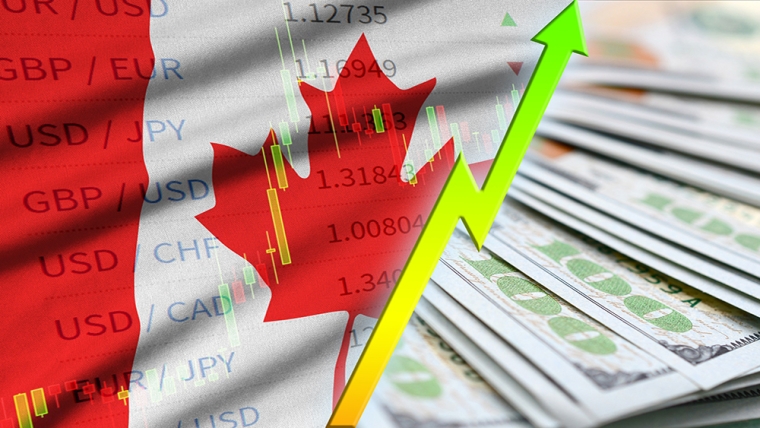
The Bank of Canada rocked markets with a surprise rate hike after its two-meeting pause, triggering a sell-off of global bond markets and US equities. The NZD and AUD have been caught up in the risk-off move, underperforming alongside the yen. The domestic rates market is set to open with higher rates across the curve.
The key overnight news was a surprise 25bps rate hike by the Bank of Canada to take its policy rate to 4.75%. While market pricing was close to a 50% chance going into the meeting, only a small minority of economists picked the move. The Bank cited stronger than expected GDP growth in Q1, a recent pick-up in housing market activity, more persistent than expected excess demand in the economy and higher than expected CPI inflation in April. Based on that evidence the increase in the policy rate reflected “our view that monetary policy was not sufficiently restrictive to bring supply and demand back into balance and return inflation sustainably to the 2% target”. The Statement didn’t include any forward guidance on the next possible move.
The surprise hike followed two meeting “pauses” and the recent RBA hikes that followed a pause, highlighting that for central banks a pause in policy doesn’t necessarily mean a long pause or that the following move is a necessarily a cut. Canadian rates are much higher after the move, with the 2-year rate up 21bps and the 10-year rate up 17bps, with the market pricing in another full rate hike to beyond the 5% mark by the September meeting.
The move spilled over into other markets, with the US Treasuries market extending losses, with the 2-year rate now up 7bps for the day to 4.54% and the 10-year rate up 12bps to 3.78%, some support kicking in at 3.8%. The market prices in a high chance that after a pause next week, the Fed might deliver another hike in July, with a cumulative 21bps priced over the next two meetings. Next week’s US CPI release, a day ahead of the FOMC meeting, is shaping up to be a key release that will set the tone for policy.
The CAD strengthened by nearly a full cent immediately after the decision, but the move proved temporary and the currency now shows only a small appreciation for the day, with USD/CAD down modestly to 1.3380.
The NZD and AUD are two of the weakest currencies overnight, with post-BoC moves higher giving way to a larger fall, with the NZD trading down to 0.6040 and the AUD falling to around 0.6650 – their underperformance reflecting “risk-off” after the BoC move even though the VIX index is barely changed. Indeed, after closing below 14 for the first time since February 2020 the index is still hovering just below that mark as we go to print.
Data released yesterday showed China exports and imports contracting, a sign of both weaker global growth momentum and soft domestic demand, supporting speculation of easier policy settings ahead. While the yuan weakened modestly after the release, there was more of a swing overnight, with USD/CNH breaking up through 7.15 for the first time this year in the aftermath of the post-BoC moves seen in currency markets. It looks like the NZD and AUD have been caught up in the backwash of that move.
JPY has also underperformed, reflecting the higher global rates backdrop, with USD/JPY back over 140 after diving to just over 139 in the immediate aftermath of the BoC. EUR and GBP show little net movement for the day. With the NZD being the worst performer of the lot, all the key crosses are lower, with NZD/AUD down to 0.9080 and falls of 0.7-0.8% for the day against CAD, EUR and GBP.
US equities opened on a positive note, but the market has trended lower post-BoC, with the S&P500 currently down 0.3% for the day, with the tech sector underperforming.
Yesterday the domestic rates market faced upside pressure on the open, in response to the RBA’s hike that came after Tuesday’s close. But there was some cross-market outperformance, with muted increases overall against a backdrop of Australian rates facing more upside pressure as RBA Governor Lowe maintained a hawkish bias in a speech delivered. The 2-year swap rate closed the day 4bps higher at 5.29% and the 10-year rate up 1bp to 4.40%. NZGB rates showed similar moves, rising 1-5bps across the curve.
In the aftermath of the BoC’s hike overnight, there will be further upside pressure on rates today. Australian 3 and 10-year bond futures are both up around 14bps in yield terms since the NZ close. The hike after pausing will get the market wondering whether the RBNZ could do the same, after signalling the end of the tightening cycle at the May MPS, although the difference with the RBNZ is that the MPC noted it was now “confident” that policy was restrictive enough to meet its inflation objective.
In the day ahead, NZ business activity indicators for Q1 will help firm up our GDP estimate which currently sits slightly negative. The global economic calendar remains light.

We welcome your comments below. If you are not already registered, please register to comment
Remember we welcome robust, respectful and insightful debate. We don't welcome abusive or defamatory comments and will de-register those repeatedly making such comments. Our current comment policy is here.